My initial thought about this assignment is orrery, maybe like one in the 2012 movie Prometheus or the solar system model in New York museum of natural history. And then I thought about the different planets the little prince from Antoine de Saint-Exupery visited and formed an initial idea I want to try realize: a vessel consists of polyhedrons and maybe spheres and on each surface: a symbol or depiction of different stories: maybe the adults little prince met.
To realize this concept, I started by going through slides of lectures 10 and 11 and soon found that what I can do is, perhaps, limited. I also tried Google and also found two books to reference: Arturo Tedeschi’s AAD Algorithms-Aided Design and Bachman’s Grasshopper visual scripting for Rhinoceros 3D 2017. At first, I was attracted to various cool tutorials from Google result and also from Bachman’s Grasshopper book, for example, offsetting the surface in chapter 4, morphing a logo onto a cylinder in chapter 5, etc. But there are various component to study in those tutorials. Since time is limited, I went back to what I got from lecture slides and google for more specific grasshopper python script operations I could think of.
My first breakthrough is finding the “rs.coercecurve(l)” to get object from guid. This allow me do transformations directly on the curves I created in python script. I then tried the spiraling outward polar curve I used in previous assignments. At the same time, I tried to print and got a vague sense of the constraints of 3d printing and also found Arturo Tedeschi’s AAD book describes what is printable: close geometries, manifold mesh, and gravity.
After coming up with a spiraling outward polar curve shell with polygon cross section, I thought maybe helix curve is more suitable. I tried connect two helix curve shell with pipes from earlier expriments and found that maybe it can be a good frame for a more irregular, interesting vessel. And this leads to my final design so far: a vessel consists of 4 units: 3 helix curve vessel and an ornament in the center made up of randomly places spheres. My ideal is to find a way to shell the joined spheres and let it be a vessel too, instead of it being just a solid ornament or a thin wall carved by Cura. I think maybe manual shell by scale shrink may work. I chose QuadSphere because it’s the only shape I currently got. I tried but failed to use RHINOPOLYHEDRA (https://www.food4rhino.com/en/app/rhinopolyhedra). I also thought about making pyramids with python script.
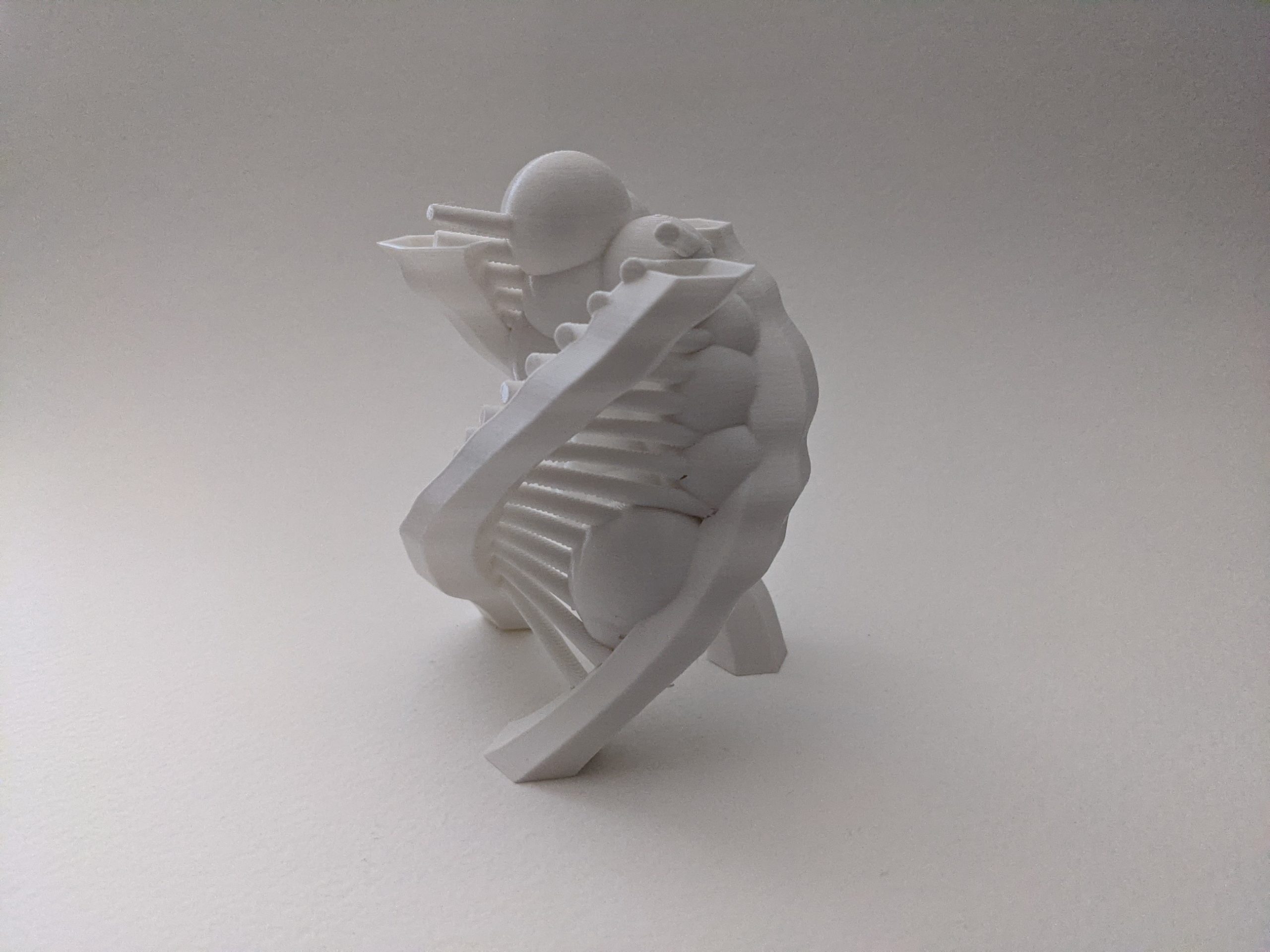
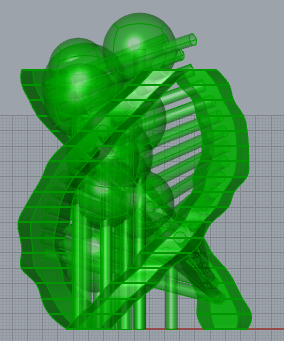
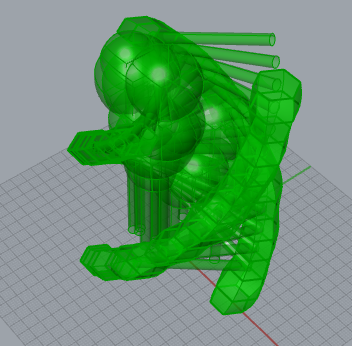
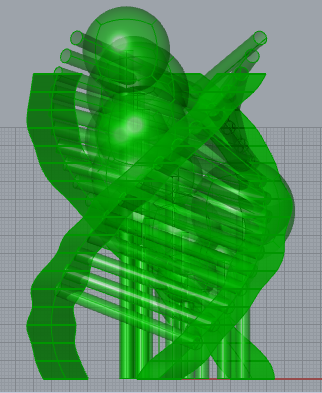

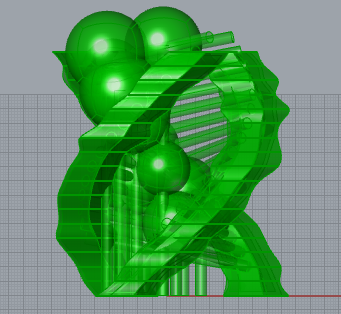
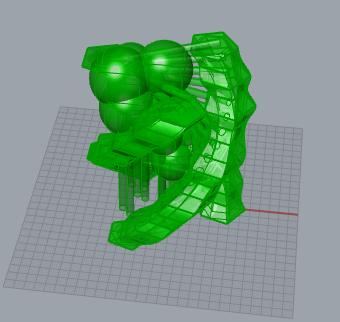
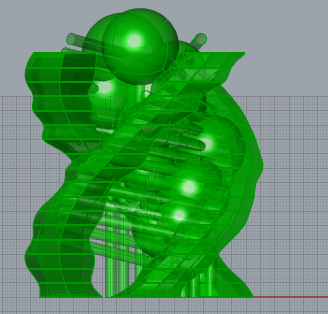



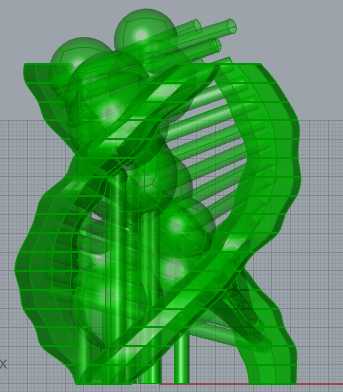
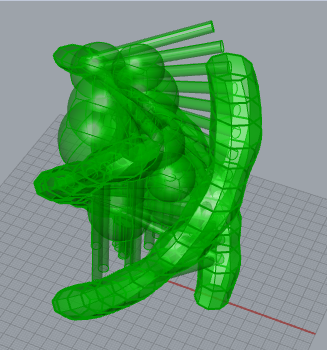



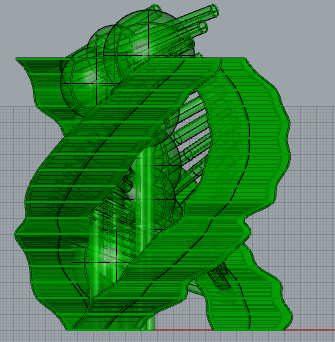
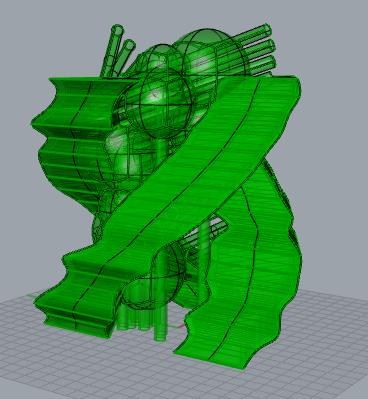

Three forms I generated but did not print:
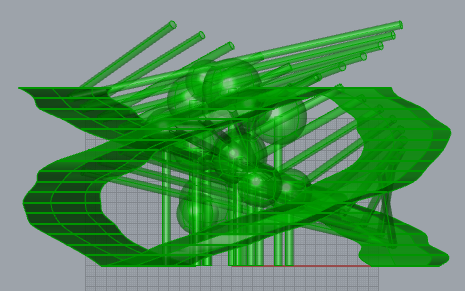
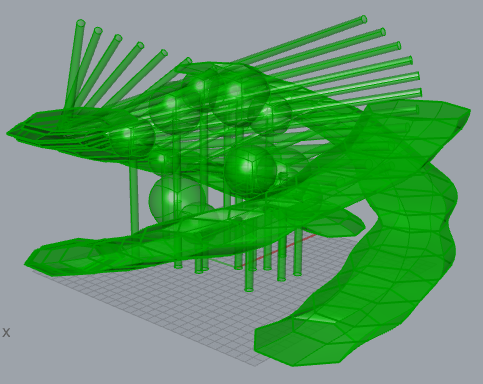
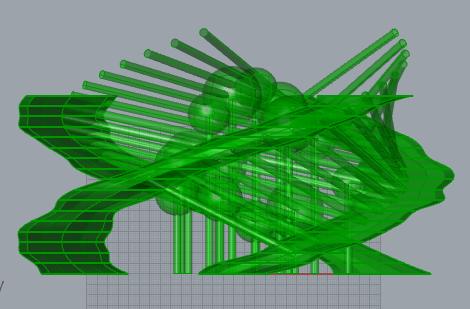
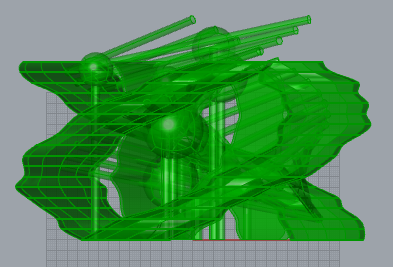
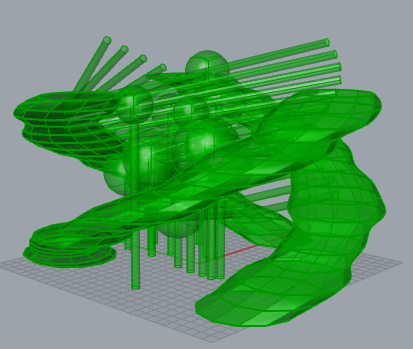
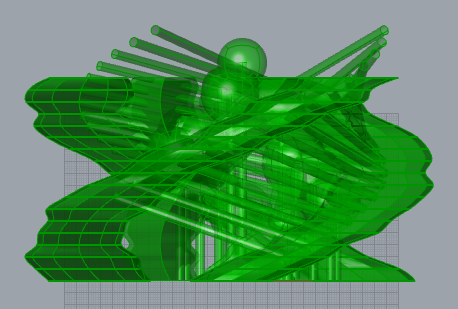
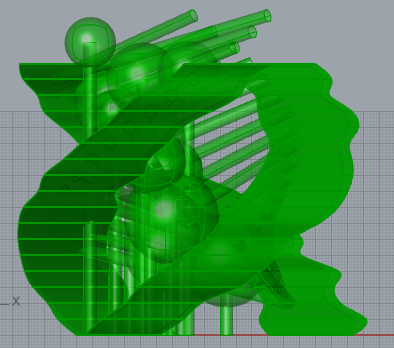
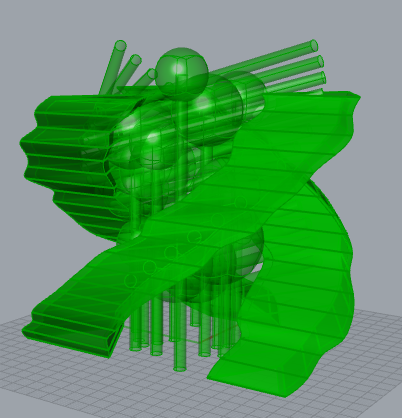
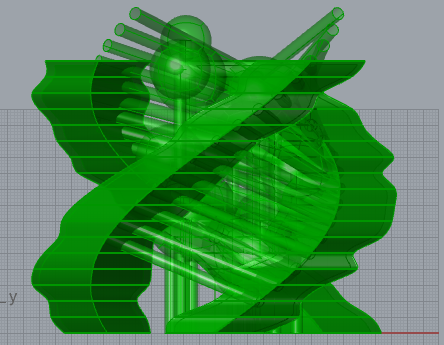
Images of my printing process:
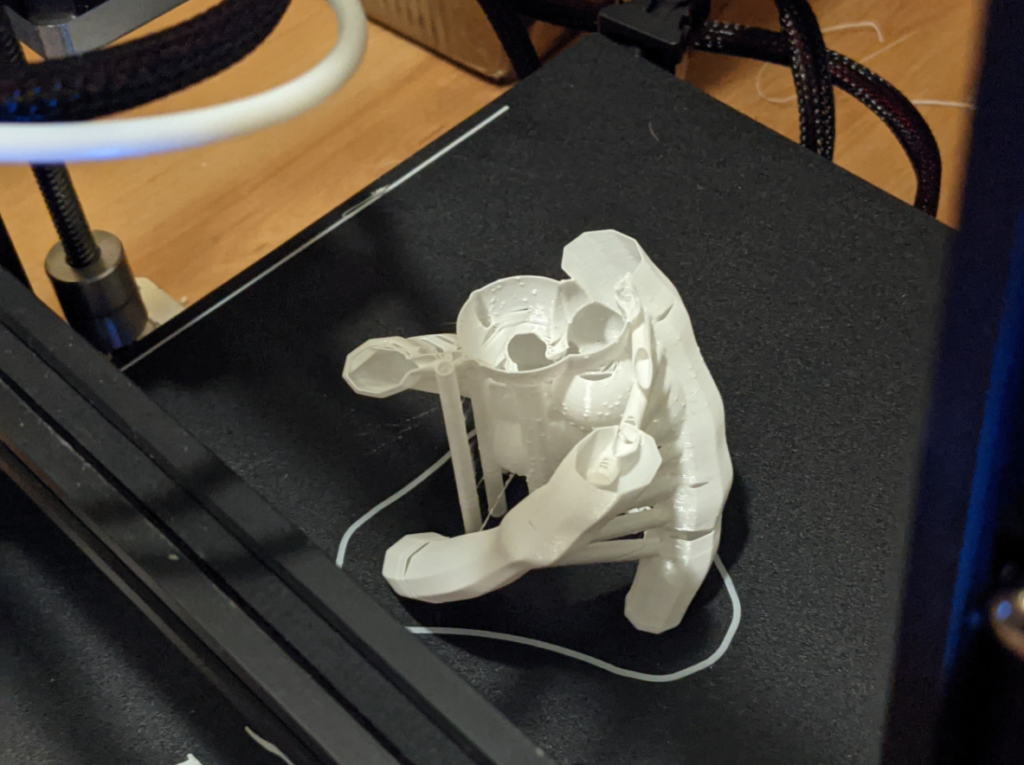
Image of my experiments and problems I encountered:
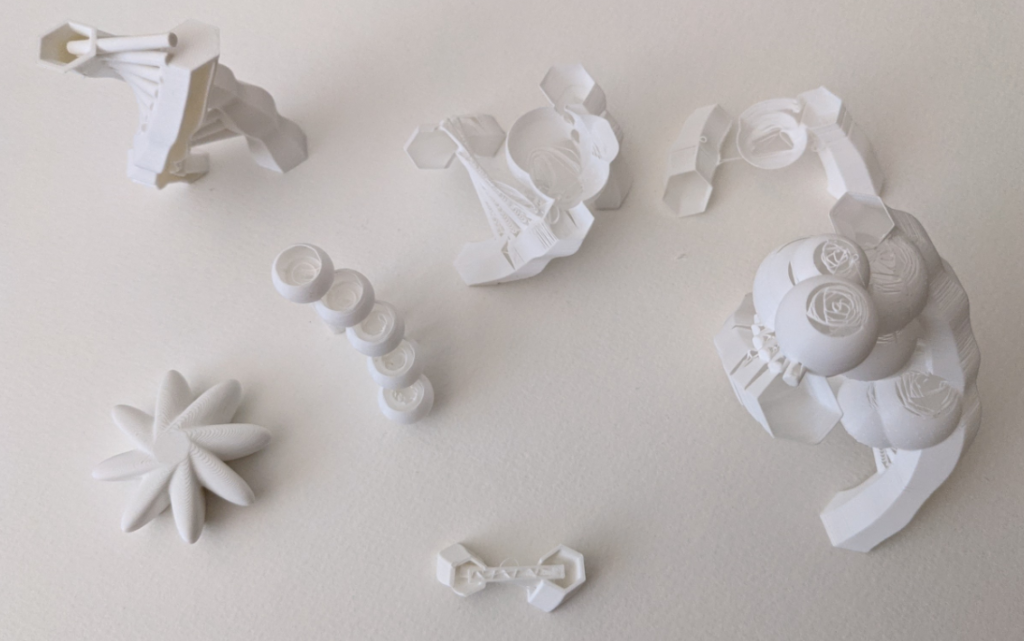
I think this image summarized some problems I encountered: how to set the indicies of closed polysurface faces to remove for shelling in the grasshopper “Shell Polysurface” component, trial and error to see which shape or form can be shelled by “Shell Polysurface” component, limitation of Cura’s spiralize outer contour function, finding that two helix curve subunit cannot stand so I have to add a third helix.
A reflection on parametric design process
Creating objects via programming and 3d printing allowed me to control the relative distance and sizes between objects very precisely. And the way the surfaces of spheres and various forms intersect is beyond what I can do in a more traditional way. For example, if I want to create a form involving spheres, Styrofoam balls immediately come to my mind. But it will not be possible for me to try cutting and arranging Styrofoam sphere in the same way as I do in my final printed form.
I think my current design and skill is still far from utilizing the distinguishing characteristics of programming and 3d printing. One case in my mind is “Jack and the bean stalk” where I can use tubes and forms to create a vessel for bean sprouts that travel through clouds into the realm of the giant.
But I think there are also some limits as to my current way of utilizing 3d printing and programming: the difficulty in navigating 3d space and how to transform ideas into script or formula. By navigating 3d space, I mean what the view ports of grasshopper showed is limited: it only has certain angles and it’s strenuous sometimes to click and drag to find the correct angle to inspect problems in design. And it’s also sometimes hard to find what went wrong in my script regarding object position. Whereas in arranging real objects, I can just move them. And it’s also sometimes hard to modify scripts to try make different effects and rotations.
A reflection about my creative agency and intent
I tried to come up with an idea first but soon found that what I could control is limited as described previously. Therefore, I have to do experiments, explore techniques, modify my scripts and observe the results and choose what I liked or what can contribute to my original idea.
I think my current conclusion is that my form is a blend of my intention and some unexpected results. And I think traditional design process also has this emergent(?) property where the unexpected arise too. But I think the way the unexpected happens is different. Here it’s the result of script and software tools and sometimes a lack of total understanding of the underlying mechanism. And I think using scripting and 3d printing allowed me to iterate through more rapidly different designs and unexpected results.
Link to my grasshopper code: https://handandmachine.org/classes/computational_fabrication/wp-content/uploads/2022/03/YieShengChenLA2.gh
Cool pieces Jimmy! I agree about the unexpected elements of the designs that happen with this process and with other art mediums. I think with 3d model scripting there is a lot less control of those unexpected outcomes. With both you can learn how to mitigate those outcomes, but I think less so when we have algorithms like L-systems or this parametric process.
Hi Craig, this reminds me that I sometimes thought about what it’s like to be an wizard instead of muggle in the HarryPotter world. In Rhino and grasshopper, we can move things around effortlessly. We can conjure up things effortlessly. But it seems we can still having difficulties. What about the wizards?
Does their wand has high level language? Or what they learn in hogwarts is similar to Rhino too? They are learning how to speak to Rhino to move things, conjure things precisely and effortlessly? Efficiently? Being able to code precisely, effortless, efficiently??
Your designs are really impressive! Each of the ones that you brought to class were really impressive and interesting to see. When I was printing I too had to make multiple prints to get it correct. Seeing the individual pieces of the problems that you encountered are interested too since they almost look like they could be individual pieces themselves. I didn’t think that I could print something very complex, but your design has proven to me that I could. Great job! I can see all of your and efforts that you put into the project.
I think I am lucky to come across this: https://developer.rhino3d.com/api/RhinoCommon/html/Methods_T_Rhino_Geometry_Brep.htm
But there is no python. The page only listed VB and C#. But I think it’s much better to have this list of python APIs instead of try Googling. And then being able to ctrl+f what is needed on the webpage and try how the APIs work in python.
Hello! I really like the way your designs came out and how you managed to create three of these. The helix structure reminds me of DNA and I like the inclusion of the small details like the spheres in the middle. I can only imagine how difficult printing this may be given the structure but the results speak for themselves. Looking forward to seeing more stuff like this.
Hmmm, takes much time, and then no time to go back and fix. But wonder if there are some creative ways to overcome this taking-too-much-time problem. And about DNA shape, I found maybe make the helix units further apart will make the overall piece more like orrery?